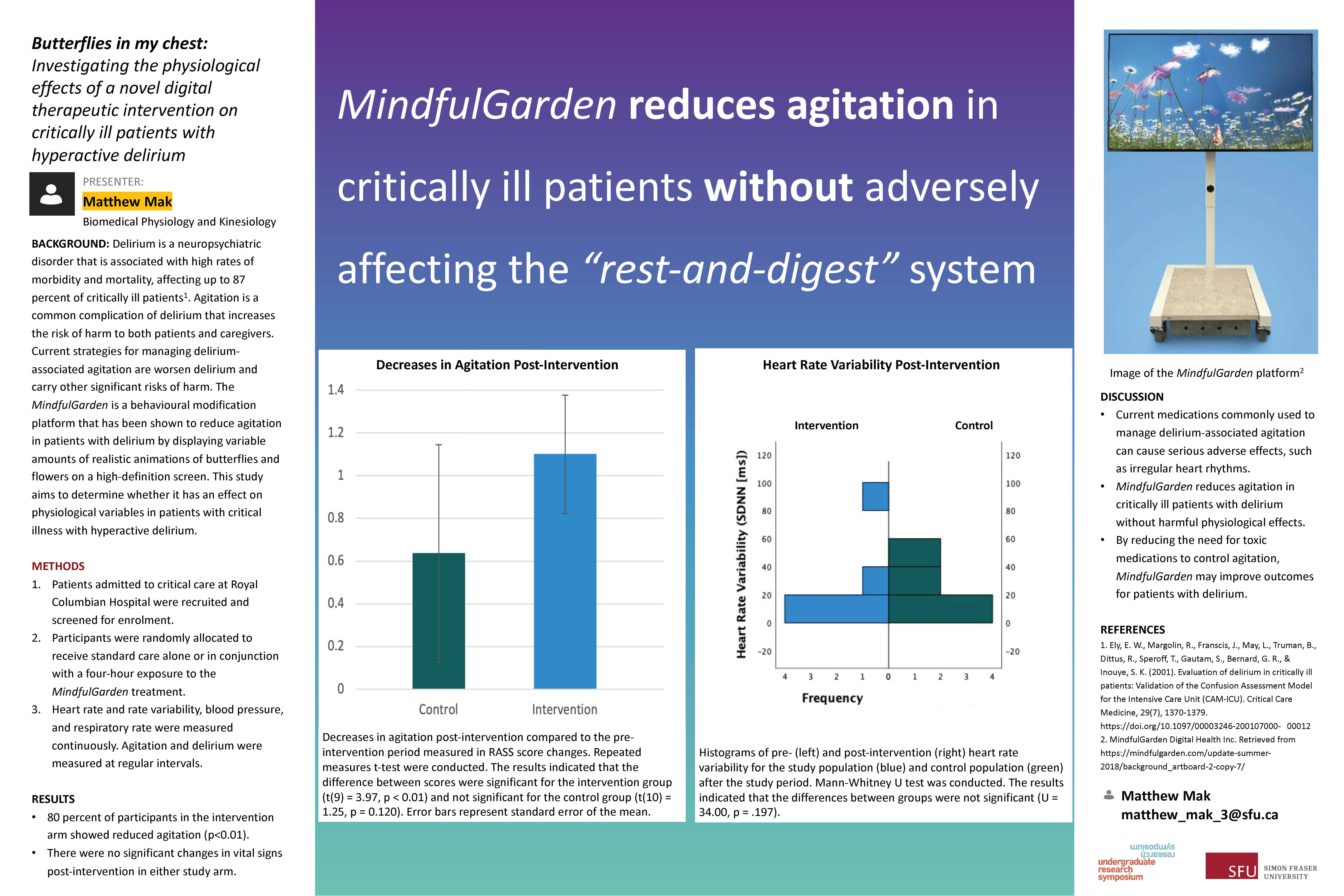Butterflies in my chest: Investigating the physiological effects of a novel digital therapeutic intervention on critically ill patients with hyperactive delirium
Main Article Content
Abstract
Delirium poses a significant burden on the healthcare system and is especially prevalent among critically ill patients. Up to 87 percent of patients admitted to critical care areas may experience this neuropsychiatric syndrome characterized by an acute change in attention, awareness, and cognition. Many present with agitation, often resulting in the inadvertent removal of invasive lines and tubes, injury to self and caregivers, and increased rates of morbidity and mortality. Current strategies for managing delirium-associated agitation are associated with significant risks, known to worsen delirium, and have very limited proof of effectiveness. To find a treatment for delirium that is both safe and effective, we conducted a clinical trial using a novel digital behaviour modification platform on critically ill patients with delirium. Participants received either standard care alone, or in conjunction with the platform that displayed nature video layered with varying volumes of realistic-appearing animations of flowers and butterflies in flight on a high-definition screen. In a subgroup of participants, heart rate variability was continuously measured to provide physiological evidence of the intervention’s calming effect. Heart rate variability describes the changes in time between heartbeats and is a well-accepted measure of parasympathetic activity, colloquially known as the “rest-and-digest” response. Data will give us a better understanding of the physiological effects of delirium and help to determine whether this novel tool is safe and effective at managing delirium in critically ill patients. Our findings may improve outcomes for not only critically ill patients, but also for a broader population experiencing delirium.
Faculty Supervisor: Dr. Steve Reynolds, Biomedical Physiology and Kinesiology, Simon Fraser University
Article Details

This work is licensed under a Creative Commons Attribution-NonCommercial-NoDerivatives 4.0 International License.

